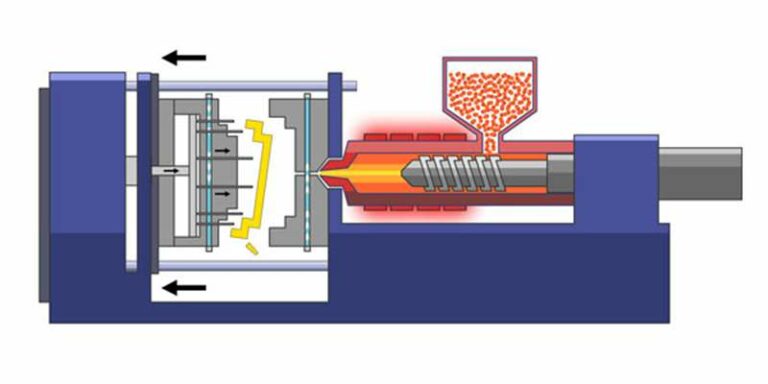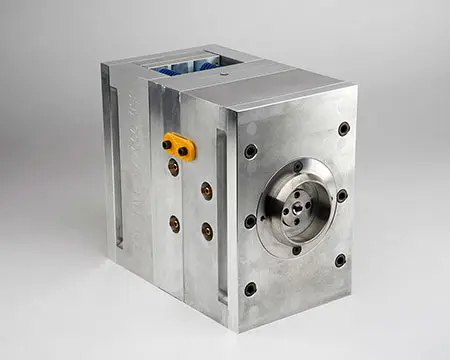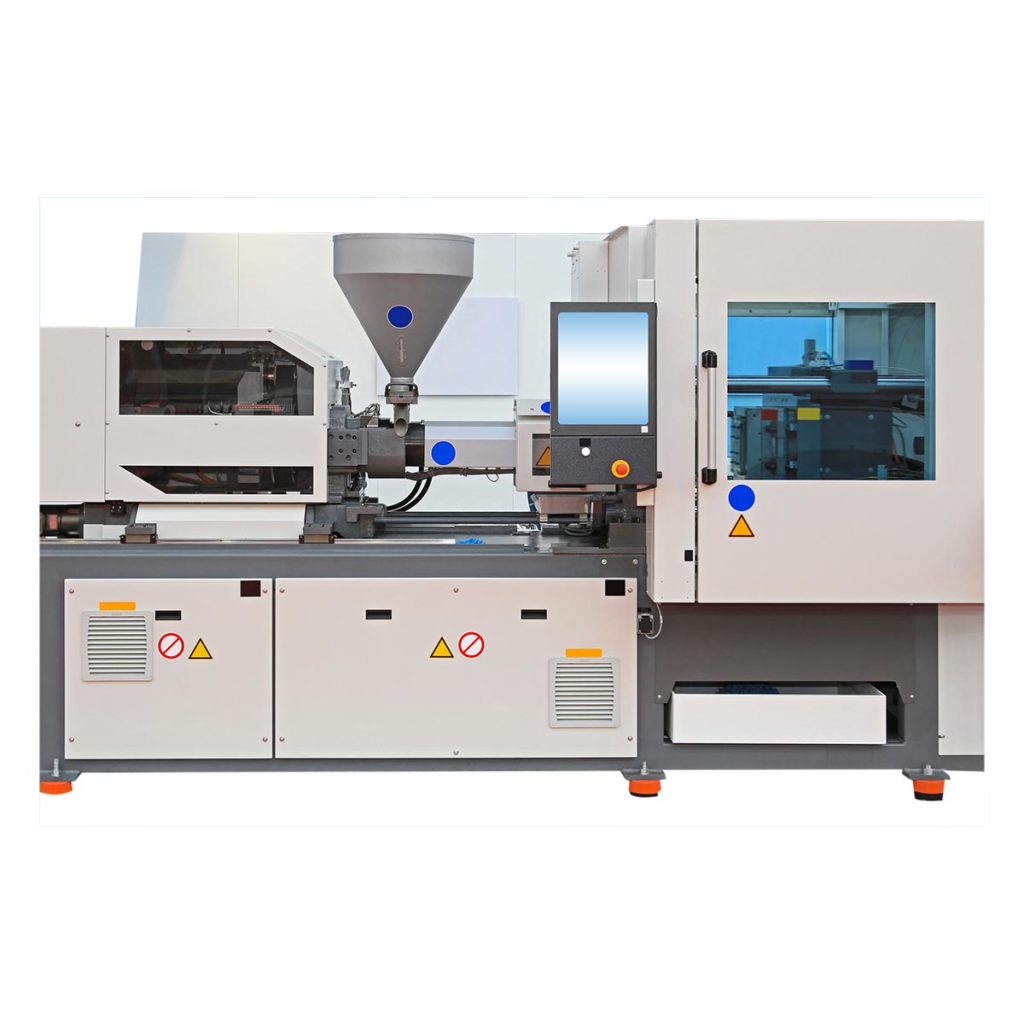Comprehending the Essentials of Plastic Shot Molding Procedures
Plastic shot molding offers as a foundation of contemporary manufacturing, offering a systematic strategy to creating complex components with accuracy. Exploring these crucial components could expose how even minor modifications can lead to significant renovations in manufacturing outcomes, elevating concerns about the possibility for advancement in this well-known procedure.
What Is Plastic Shot Molding?
Plastic injection molding is a commonly used manufacturing process that changes thermosetting and polycarbonate products into precise and complicated forms. This method is favored for its capability to produce high quantities of the same parts with remarkable precision, making it an indispensable method in different markets, consisting of vehicle, durable goods, and clinical gadgets.
The process includes melting the chosen plastic product and injecting it into a mold and mildew under high stress. The mold and mildew, developed to the requirements of the wanted part, permits the molten plastic to form as it cools down and strengthens. When the product has hardened, the mold and mildew is opened, and the ended up component is expelled.
Plastic shot molding provides numerous advantages, including minimized waste, uniformity in production, and the ability to incorporate detailed designs that may be testing with other producing techniques. Additionally, it supports a wide series of materials, each providing distinct buildings that can be customized for particular applications. As sectors remain to introduce, plastic injection molding continues to be at the leading edge, making it possible for the growth of sophisticated products that satisfy evolving consumer demands.
The Shot Molding Process
The injection molding process is an innovative strategy that includes several crucial phases to create high-grade plastic components. At first, plastic pellets are fed into a warmed barrel where they are merged a viscous fluid. This molten plastic is then injected under high pressure right into a precision-engineered mold, which shapes the product into the wanted kind.
Once the mold is loaded, the plastic is enabled to cool down and solidify, taking the shape of the mold and mildew cavity. Cooling time is essential, as it influences the cycle time and the last residential properties of the shaped component. After sufficient air conditioning, the mold opens, and the ended up component is expelled making use of ejector pins.

Products Made Use Of in Injection Molding
Numerous materials can be utilized in the injection molding procedure, each offering unique residential or commercial properties that deal with details applications. The most frequently used materials consist of thermoplastics, thermosetting plastics, and elastomers.

Thermosetting plastics, like epoxy and phenolic resins, undertake a chemical change during the healing procedure, resulting in a rigid, inflexible framework. These materials are ideal for applications needing high heat resistance and structural integrity, frequently utilized in electrical insulators and automotive parts.
Elastomers, including silicone and rubber-based products, offer versatility and durability. Their distinct residential Get the facts properties make them appropriate for applications that demand elasticity, such as seals and gaskets.
Furthermore, specialized materials like bio-based plastics and composites are obtaining grip for their environmental advantages and enhanced performance qualities, broadening the scope of injection molding applications in various check my source markets. Understanding the buildings of these materials is essential for selecting the ideal type for specific jobs.
Benefits of Shot Molding
Shot molding stands apart as an extremely reliable production process that provides numerous benefits for generating intricate get rid of accuracy. Among the most considerable benefits is the capability to develop detailed layouts that would be difficult or tough to achieve with various other methods (Plastic Injection Molding). The procedure permits comprehensive features and tight tolerances, making certain high-quality components
In addition, injection molding is understood for its fast production capabilities, making it an optimal selection for high-volume production. When the mold and mildew is produced, parts can be generated quickly, reducing preparations and boosting overall efficiency. This click site efficiency not just lowers manufacturing costs however likewise offers an one-upmanship on the market.
The versatility of materials used in shot molding further boosts its allure. A variety of thermoplastics and thermosetting polymers can be employed, permitting manufacturers to pick products that finest meet their specific needs, consisting of adaptability, toughness, and warm resistance.
Moreover, the process reduces waste, as excess product can typically be recycled and reused. This sustainability element contributes to a lowered ecological effect, making injection molding a liable production selection. Generally, the benefits of injection molding make it a favored method for several sectors.
Factors Impacting Item Top Quality
While numerous aspects can influence product quality in shot molding, recognizing these components is vital for achieving optimal outcomes. Key elements include product option, refining criteria, and mold layout.
Material selection plays a vital duty, as different polymers show special buildings that influence flowability, toughness, and thermal stability. Poor material option can cause issues such as warping or incomplete filling.
Handling parameters, consisting of pressure, temperature level, and cycle time, need to be thoroughly regulated. Variants in these settings can lead to variances in component dimensions and surface finish. Exceedingly high temperatures may create deterioration of the polymer, while inadequate pressure can result in brief shots.
Mold and mildew layout is just as vital, as it identifies the flow of the molten plastic and the cooling process. Poorly developed mold and mildews may cause irregular air conditioning prices, resulting in dimensional inaccuracies and residual tensions.

Verdict
In conclusion, plastic injection molding functions as a vital production process that makes it possible for the reliable manufacturing of top quality components. Mastery of the injection molding process, consisting of the understanding of materials and the impact of various elements on product top quality, is vital for attaining optimal outcomes. The advantages of this technique, such as cost-effectiveness and layout adaptability, further emphasize its importance across several sectors, strengthening its standing as a preferred choice for high-volume manufacturing.
Plastic shot molding serves as a cornerstone of modern-day manufacturing, giving a methodical method to producing complicated components with accuracy.Plastic shot molding uses numerous advantages, consisting of lowered waste, consistency in manufacturing, and the capability to integrate detailed layouts that might be testing with various other making methods (Plastic Injection Molding). As industries continue to innovate, plastic shot molding remains at the center, allowing the advancement of sophisticated items that meet advancing consumer demands
The shot molding procedure is an innovative technique that entails numerous vital stages to create top notch plastic elements.In verdict, plastic injection molding offers as an important production procedure that makes it possible for the efficient manufacturing of top quality elements.